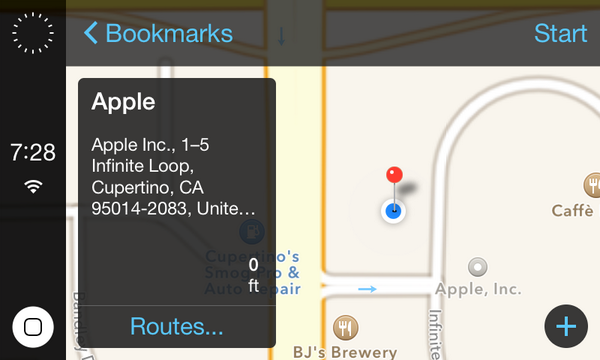A developer recently unlocked what looks like an alternate user interface for Apple’s new iOS operating system for cars.
Apple is planning to release a version of its mobile operating system, iOS, built specifically for automobile dashboards, as VentureBeat previously reported. The company already has partnerships with several leading automakers to feature the iOS integration, which will launch later this year.
The previous version of the in-car iOS showed off what it might look like when receiving audio phone calls and listening to music. The new version of the interface, discovered by developer Steven Troughton-Smith, shows a new home screen that uses app buttons rather than the row of horizontal blocks along the bottom of the screen that was shown off this summer during Apple’s developer conference.
The screenshots also give us a closer look at what a turn-based map app could look like, as well as a new way to navigate within apps. As you can see from the images embedded below, Apple has placed a column of basic controls (home button, Wi-Fi, etc.) on the far left side of the touch screen. (That makes sense since the driver is also on the left.) Controls for the map app are located along the top.
The new interface seems far more functional, but it could also just be an experiment that Apple is toying with. We won’t know for sure until the first iOS-integrated cars roll off the lot later this year.
Apple isn’t the only one embedding an operating system into vehicles, either. Earlier this month, Google revealed partnerships with Audi, GM, Honda, and Hyundai to feature its Android operating system within new cars.
Via 9to5Mac; Screenshots via Steven Troughton-Smith/Twitter
VentureBeat's mission is to be a digital town square for technical decision-makers to gain knowledge about transformative enterprise technology and transact. Learn More





